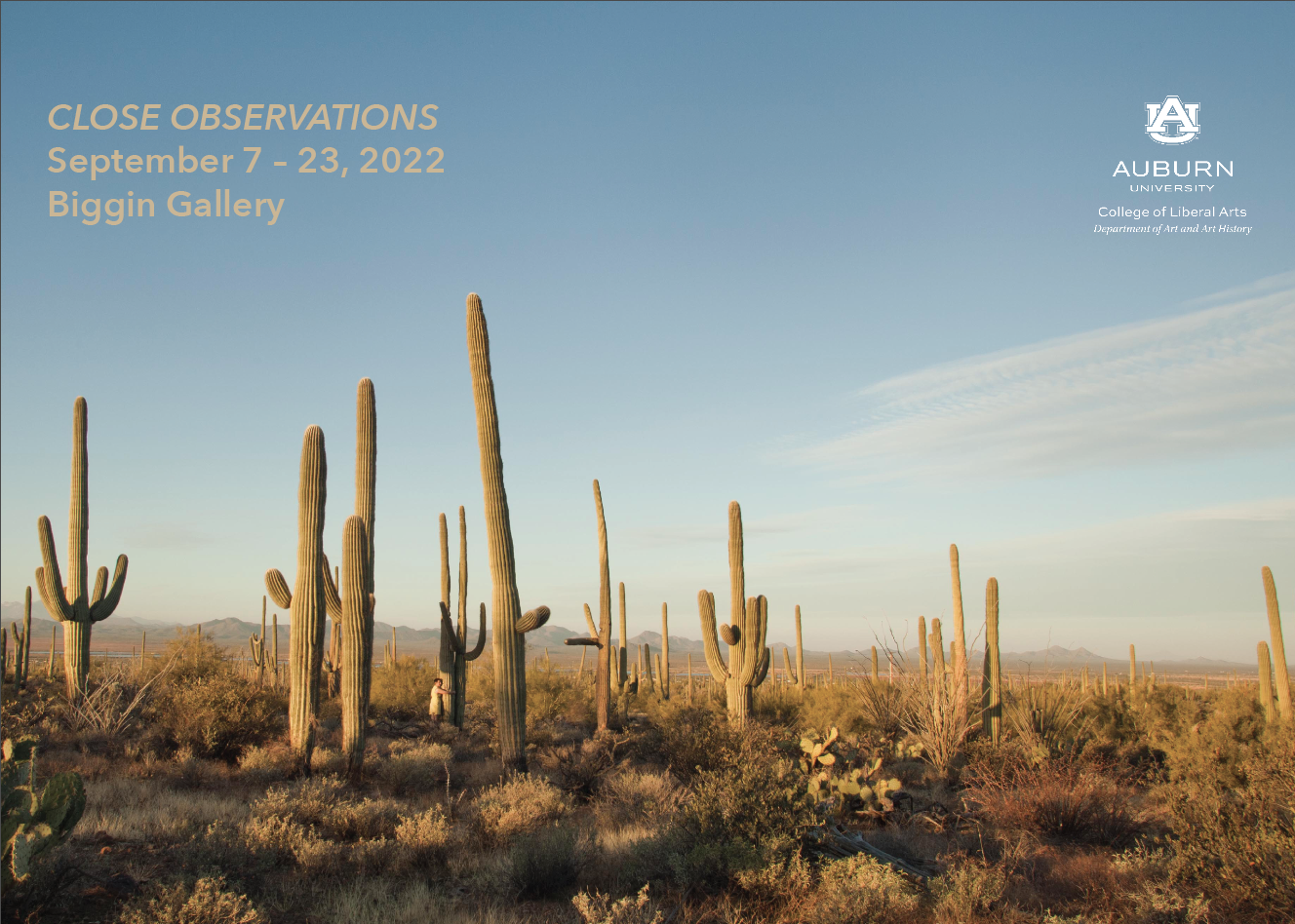Close Observations, Biggin Gallery, Auburn University, AL, 2022
Group exhibition featuring works by Thomas Asmuth and Sara Gevurtz, Debora Bernagozzi and Jason Bernagozzi, Katerie Gladdys, Jenny Kendler, Jenna Maurice, Oshkii Giizhik Singers and Elizabeth LaPensée, and Areca Roe.
September 7–23, 2022
Close Observations is a group exhibition of video art exploring the natural world at the intersection of scientific and artistic information gathering. The featured artists both react to scientific findings about the environment, and examine how images, song and performance can reveal more about our relationship to our ecosystems.
In documented performances, Jenny Kendler and Jenna Maurice explore the human longing to be part of the other, or the world around us, and the limits of our interactions with our environment—no matter how well-intentioned. As Kendler says in her narrative for Offering, “Though we are certainly animals, in many ways we stand forever apart. We can never truly know ‘what it is to be a bat.’ And yet, this does not diminish our desire to offer ourselves as companions to the non-human world. Whether through acts of imagination, acts of empathy, or acts of care, we can never quite reach the other side.” But we can pay attention, and try to understand our world and our relationship with it.
As Areca Roe’s lenticular prints depict, this relationship is ever-changing, especially as climate change may force us to reevaluate our relationship with our local environments. These photographs, while not video artworks, come to life through the lenticular printing process. In these 3D scenes, Roe imagines the collision of human habitats—our homes—with the natural world, the two forced into closer proximity due to shifting habitats and biomes. In Transect, Roe engages more directly with her scientific inspiration, using colorful flags and tapes meant for ecological research. The resulting making explores how we seek not only to understand ecosystems, but also to manipulate them.
Engaging even more closely with the scientific process, Thomas Asmuth and Sara Gevurtz combine abstracted footage taken on the Susquehanna River in northern New York state with visualizations of water turbidity, or clarity, data. In conversation with this data visualization, Ritual for Biological Media, a recorded video and sound performance by Debora and Jason Bernagozzi, investigates and meditates on the unseen world of biological processes as a metaphor for the transmission of data structures that govern our world.
Of course, contemporary scientific observation, filtered through art making, is one way of attempting to see and understand the natural world. In Continuous Compost, Katerie Gladdys documents and aestheticizes the cycle of transforming waste into rich, fertile soil on three levels: commercial, communal and personal, showing us her own backyard composting. Gladdys demonstrates meaningful environmental impact on relationships of differing scales, reminding us of the possibility of positive action. And in Honour Water, a singing game, the Oshkii Giizhik Singers and Elizabeth LaPensée offer us another form of knowledge through Water teachings and singing challenges in Anishinaabemowin, the Anishinaabe language.
Together, the artworks in this exhibition show us different ways to see and respond to observations both analytical and poetic, suggesting new possibilities for a relationship with our environment based on openness, curiosity and care.
